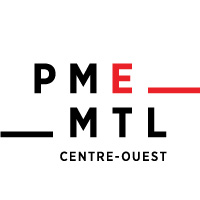Like many Québec entrepreneurs, you may have been forced to take on debt during the past year. Nicolas Roy, Executive Director of PME MTL Ouest-de-l'Île and Laurie Paquette-Tannir, Financial Security Advisor, addressed the topic of corporate loans during a conference that was presented within the context of Expo Entrepreneurs. Below is a summary to help you understand debt and its benefits during a recovery period.
1. Developing a recovery plan to better manage liquid assets and deal with unforeseen circumstances
After everything we have been through, it’s now time to get back to basics. We recommend that you revisit your business plan and business model. Here are a few concrete suggestions that may help you:
- The 80-20 rule is a good place to start, prioritizing projects that will add value to the business;
- Revise your mission and vision;
- Conduct a market study to determine what your competitors have done during the pandemic;
- Ask yourself important questions, like: “What do we not want to go through again? How can we avoid it?”;
- Prepare or redo your financial forecast for 6 to 12 months, even if it’s not easy to do right now;
- Develop budget tools, including a cash budget, and update them frequently;
- Identify expenses that do not create value and those that should be maintained;
- Ensure that your team is performing well, focusing on quality rather than quantity;
- Recalculate costs to ensure the profitability of your business;
- Seek out experts who can help you find financing and resources to take you further.
Managing risk:
- Develop a quarterly plan that includes income forecasts and concrete actions for multiple possible scenarios:
- Solidify your vision and share it with your team:
- Monitor the growth of indicators like working capital, stocks and income in order to make the right decisions on a daily basis:
- Establish a procedure in case of an event beyond your control, like a health crisis, a sick employee or the loss of a major client:
- Make provision for an emergency fund.
2. Determining the right time to take on debt
Is it a bad idea to take on debt right now?
Entrepreneurs do not like to take on debt, because debt is often perceived in a negative light. However, debt can be a very profitable instrument if you know how to manage it properly and take advantage of business opportunities. Debt can help an entrepreneur to carry out new projects and diversify in order to increase liquid assets.
The current conditions surrounding loans are exceptional – low interest rates, flexible repayment terms, 6- to 12-month moratorium on repaying capital and more. It may be worthwhile to apply for a loan while these conditions are still available.
Of course, an entrepreneur should only take on debt for a good reason.

3. Identifying good debts
A good debt is one that is planned and that creates value for the business.
Some examples of good reasons to take on debt:
- To increase the productivity of a business.
- To improve in-store presentation.
- To develop a new line of products to increase sales.
- To create a transactional site to enhance and revitalize your online presence.
These planned projects generate increased income, which adds value to the business. In these cases, debt becomes a temporary instrument with a long-term positive effect.
4. Planning for new debt?
The effects of the pandemic have forced entrepreneurs to take on debt in “emergency mode”. Under normal circumstances, debt should be planned over a long period by doing the following:
- Conducting an analysis and developing financial forecasts.
- Taking the time to shop around for a loan and asking for quotes.
- Above all, speaking with experts who can recommend the financing options best suited to your situation.
An economic recovery is the perfect opportunity for developing a plan, even if you have already taken on debt. Your recovery plan will enable you to prioritize revenues, limit expenses and better manage your current debt.
5. Concrete steps for managing debt
Prioritized management, or paying off debts with higher interest rates first, is a key principle in managing debt. It is also important to have an up-to-date budget and financial forecasts.
6. The current position of lenders
As a lender, PME MTL wants to continue to create sustainable wealth in the community. Our goal is to help entrepreneurs in the following areas:
- Accelerating growth:
- Taking advantage of business opportunities.
- Creating value for businesses.
These key factors enable us to determine how we can support each entrepreneur.
7. Preparing for recovery
The first piece of advice is to not go back to normal!
This crisis has shown us that we can’t control everything, despite having a plan and setting objectives. There are unforeseen events that we cannot control. The pandemic has forced entrepreneurs to be creative and diversify their revenues. It is important to continue to build on what we have learned.
The second piece of advice is to make plan and keep it updated. This will allow you to make the best decisions on a daily basis, even in the case of unforeseen events.
Do you have an entrepreneurial spirit, but maybe you haven’t mastered the figures? We can help in many ways, including planning for new debt and developing the tools you need for proper business management!
---
Nicolas Roy, Executive Director at PME MTL Ouest-de-l'Île and guest speaker at Expo Entrepreneurs 2021, help put together this article.
